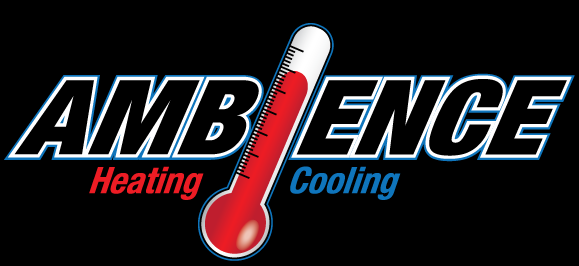
Would you believe that more than half of your home’s energy costs are for your heating and cooling? This is the reason why it’s essential to secure an energy-efficient HVAC system.
Furnace efficiency standards were last modified to an Annual Fuel Utilization Efficiency (AFUE) rating of 80% in 2015. This rating system calculates how effective your furnace is at combusting natural gas into heat. An AFUE rating of 80% means your furnace wastes about 20% of the fuel it uses while producing heat.
In 2022, the Biden Administration proposed new energy-efficiency standards for residential gas furnaces that would substantially reduce emissions, save homeowners money and stimulate sustainability.
This proposal is anticipated to:
- Save Americans $1.9 billion annually.
- Reduce carbon emissions by 373 million metric tons and methane emissions by 5.1 million tons over 30 years, the equivalent of what 61 million homes emit yearly.
Starting in 2029, the updated rule would demand all new gas furnaces to feature AFUE ratings of 95%. This means furnaces would turn nearly 100% of the gas into usable heat.
With these facts in mind, you may be asking yourself "what happens to my existing furnace"? For the time being, not much, as the proposed rule will not go into effect until 2029 at the earliest and will not affect furnaces that are already in use.
But if you need furnace replacement in soon, highly energy-efficient furnaces are already available. Find out how these furnaces can save you money on your utility bills.
Guide to Condensing Furnaces
How Condensing Furnaces Work
A condensing furnace is a type of heating system that uses a secondary heat exchanger to trap wasted heat from the furnace's exhaust gases. This reduces the quantity of energy wasted, improves energy efficiency and lowers carbon-monoxide emissions. It also will take less natural gas to produce the same amount of heat when compared to other types of furnaces.
How Condensing Furnaces Differ from Non-Condensing Furnaces
The biggest difference between a condensing furnace and a non-condensing furnace is condensing models use a secondary heat exchanger to gather any wasted heat from its exhaust gases, while the latter does not.
How Long Condensing Furnaces Last
The life span of a condensing furnace depends on the brand, model and other factors. Usually, a condensing furnace is likely to last between 10-20 years with proper maintenance and regular service. If your heating system doesn’t have regular furnace maintenance, the unit may not last as long.
Why Condensing Furnaces Cost More
Usually, condensing furnaces enhanced precision is much more efficient than traditional furnaces, as it only uses the minimum amount of energy necessary to heat your home, resulting in more savings on your utility bill.
Many variable-speed furnaces are condensing furnaces, although a few are available in non-condensing models with lower AFUE ratings. In order for a furnace to be classified as a condensing furnace, it must offer an AFUE rating of 90% or higher.
Do Variable-Speed Furnaces Run Constantly?
A variable-speed furnace doesn’t need to stay on all the time. Alternatively, it runs at different speeds according to the temperature in your Wilmington home as well as the amount of energy it needs to maintain that temperature.
When sufficient energy is demanded to maintain your set temperature level, the furnace will switch to a higher speed to manage the higher demand. Precise fan speeds offer more efficient heating in your home while also offering quieter operation.
Guide to Two-Stage Furnaces
Two-Stage Furnaces: What They Are and How They Work
A two-stage furnace is a type of heating system that utilizes two different stages of operation — high and low. In the low stage, the furnace runs at a reduced capacity to help maintain the chosen temperature for your home more efficiently. During the high stage, the furnace will instead run at maximum capacity to satisfy demands for more heat. With a two-stage furnace, you can enjoy improved energy efficiency and balanced temperatures throughout your home.
While two-stage furnaces are highly efficient, not all all types are condensing furnaces.
Does a Two-Stage Furnace Run All the Time?
A two-stage furnace should not run constantly. In the low stage of operation, the furnace operates at reduced capacity in order to retain a preferred temperature more efficiently within your home. When additional energy is needed to sustain the set temperature, the furnace shifts to its high stage and operates at full capacity. For this reason, two-stage furnaces are able to help reduce energy costs without operating around the clock.
Comparing Two-Stage and Variable-Speed Furnaces
Two-stage furnaces have two stages of functionality, low and high. During the low stage, the furnace works at reduced capacity in order to uphold a desired temperature within your home. When additional warmth or cooling is needed, the furnace will switch to its high stage and operate at peak capacity.
Variable-speed furnaces, meanwhile, can run at multiple speeds in order to keep a desired temperature more consistently at home. As such, variable-speed furnaces offer greater savings on your utility bills .
Differences Between One- and Two-Stage Furnaces
One-stage furnaces have a single stage motor and operate either at full power or not at all. In other words, the furnace is always running in order to maintain a desired temperature at home.
Conversely, two-stage furnaces have two stages of operation, low and high. While in the low stage, the furnace runs at reduced capacity in order to maintain the desired temperature more efficiently. When a greater demand for warmth or cooling is desired, the furnace will change over to its high stage and operate at peak capacity.
Make Your Furnace Installation Appointment with Ambience HVAC, Inc. Today
Making sense of modern furnace technology can be confusing. That’s why Ambience HVAC, Inc. experts are here to help with a free, no-pressure estimate for furnace installation. We’ll assess your home, your heating requirements and your budget before helping you find the right solution. Get in touch with us at 302-239-HVAC (4822) to get started today!
